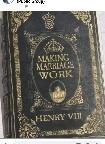Cloning a Pocket Power
- Sylvester
-
 Topic Author
Topic Author
- Platinum Member
-

- Posts: 14258
- Thanks: 1525
Cloning a Pocket Power
13 years 3 months ago
Scientists and one commercial company can create the clones the American Quarter Horse Association wants to keep off its registry, but the process is complicated.
“It’s a very, very difficult process, and it’s so expensive,” said Katrin Hinrichs, a professor in the Texas A&M University College of Veterinary Medicine.
Estimates put the cost at about $150,000 for one foal.
The process involves taking a genetic sample from the animal to be cloned, culturing it in a lab and injecting it into an egg from which the DNA has been removed.
“We grow the resulting embryos in an incubator for several days, then transfer them to our recipient females using a traditional embryo transfer process,” according to the website of Austin’s ViaGen, the only commercial cloning lab.
The foals then are born naturally.
Texas A&M has produced 13 cloned foals, Hinrichs said.
Four other labs claim to have produced more than 70; most only produce one or two. ViaGen is the most prolific. It also clones pigs and cattle.
A ViaGen spokesman was unavailable for comment.
The first cloned foal was born in Italy in 2003.
One argument by breed organizations against cloning is having lots of identical animals would flood the breed’s gene pool. The response is the practice can actually create more diversity in the pool by incorporating animals from gelded or castrated males.
“So many great competitors were castrated early because people thought they were not as well bred as others,” Hinrichs said. “You can leave the clone intact and use it to breed.”
The gelding Scamper took barrel rider Charmayne James to 10 of the 11 world championships she won. He’s in the Pro Rodeo Hall of Fame, and his clone Clayton was born in 2006 — not to compete but to breed, according to her testimonial on ViaGen’s website.
Other techniques such as artificial insemination and embryo transfer already give breeders the ability to create thousands of foals from one stallion.
Not all breed registries take the same stance as the AQHA.
“They’ve been registering cloned cattle for decades,” Hinrichs said.
The National Cutting Horse Association specifically allows people to show clones while other organizations allow them to compete, such as the Professional Rodeo Cowboys Association.
“It’s a very, very difficult process, and it’s so expensive,” said Katrin Hinrichs, a professor in the Texas A&M University College of Veterinary Medicine.
Estimates put the cost at about $150,000 for one foal.
The process involves taking a genetic sample from the animal to be cloned, culturing it in a lab and injecting it into an egg from which the DNA has been removed.
“We grow the resulting embryos in an incubator for several days, then transfer them to our recipient females using a traditional embryo transfer process,” according to the website of Austin’s ViaGen, the only commercial cloning lab.
The foals then are born naturally.
Texas A&M has produced 13 cloned foals, Hinrichs said.
Four other labs claim to have produced more than 70; most only produce one or two. ViaGen is the most prolific. It also clones pigs and cattle.
A ViaGen spokesman was unavailable for comment.
The first cloned foal was born in Italy in 2003.
One argument by breed organizations against cloning is having lots of identical animals would flood the breed’s gene pool. The response is the practice can actually create more diversity in the pool by incorporating animals from gelded or castrated males.
“So many great competitors were castrated early because people thought they were not as well bred as others,” Hinrichs said. “You can leave the clone intact and use it to breed.”
The gelding Scamper took barrel rider Charmayne James to 10 of the 11 world championships she won. He’s in the Pro Rodeo Hall of Fame, and his clone Clayton was born in 2006 — not to compete but to breed, according to her testimonial on ViaGen’s website.
Other techniques such as artificial insemination and embryo transfer already give breeders the ability to create thousands of foals from one stallion.
Not all breed registries take the same stance as the AQHA.
“They’ve been registering cloned cattle for decades,” Hinrichs said.
The National Cutting Horse Association specifically allows people to show clones while other organizations allow them to compete, such as the Professional Rodeo Cowboys Association.
Please Log in or Create an account to join the conversation.
- Mac
-

- Platinum Member
-

- Posts: 12013
- Thanks: 940
Re: Re: Cloning a Pocket Power
13 years 3 months ago
Or, clone a whole race of Pocket Power's!!
Please Log in or Create an account to join the conversation.
Time to create page: 0.113 seconds



